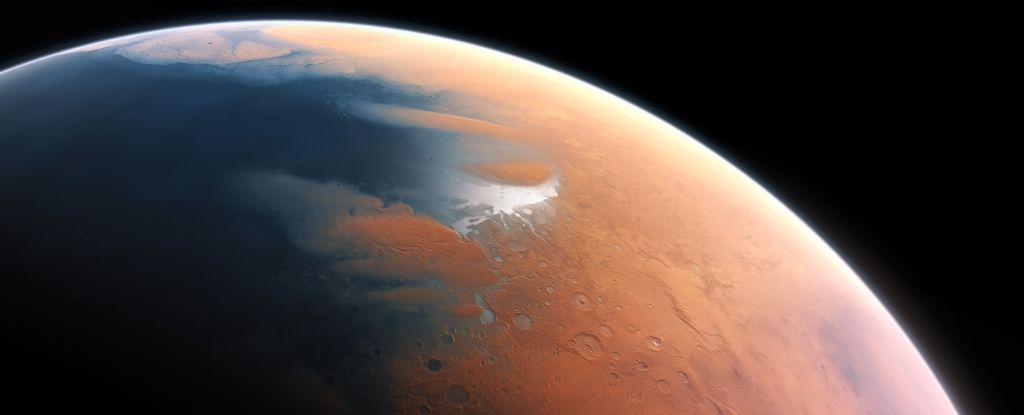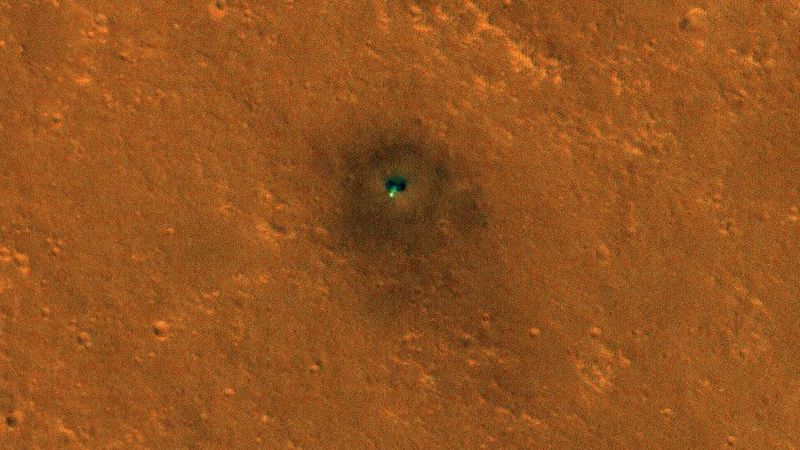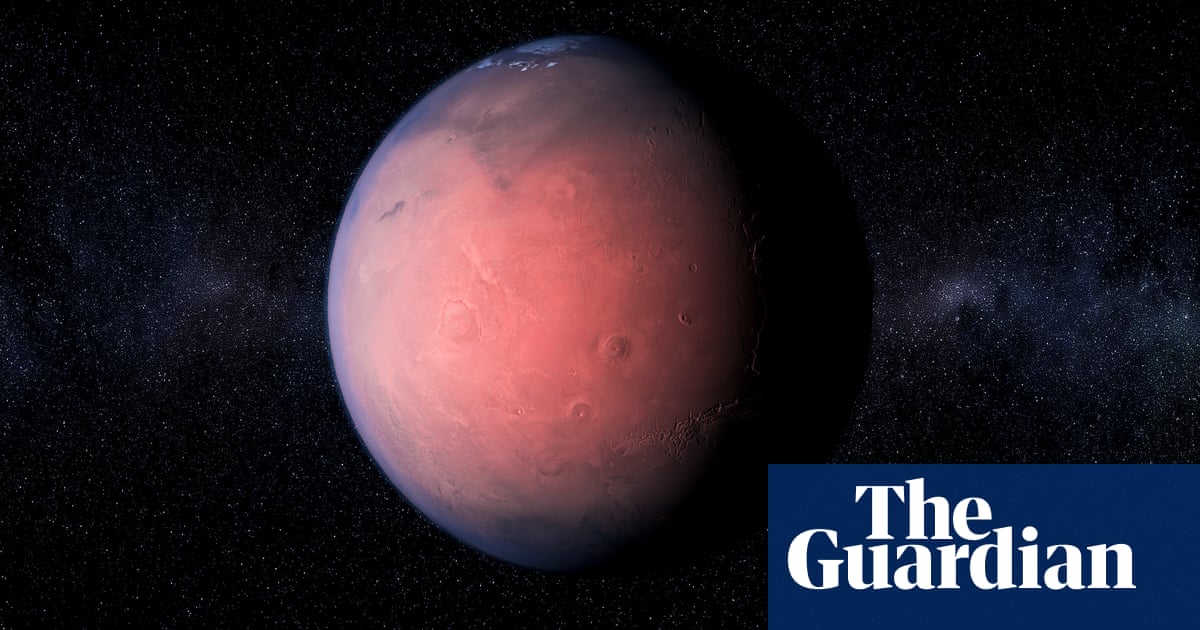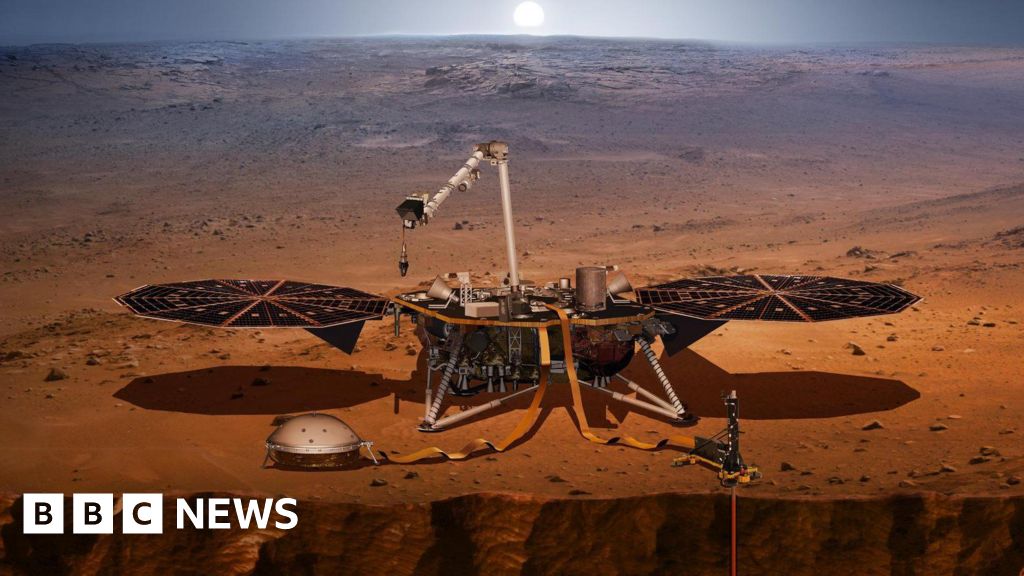Scientists have revealed that Mars may contain a vast quantity of liquid water trapped within its crust. This finding was made using data from NASA’s InSight lander, which has been probing the Martian interior since its arrival on the planet in 2018. The findings was published in the Proceedings of the National Academy of Sciences.

Also Read: Hottest Ocean Temperatures in 400 Years Pose Threat to Great Barrier Reef
NASA’s InSight lander, which arrived on Mars in 2018, was designed to study the planet’s interior using a suite of scientific instruments including a seismometer.
The primary goal was to understand the formation and evolution of rocky planets by analyzing the Martian subsurface.
Over four years, the lander recorded more than 1,300 marsquakes providing a wealth of seismic data.
These quakes or marsquakes allowed scientists to map the interior structure of Mars including the thickness of its crust and the composition of its mantle and core.
By analyzing the seismic waves generated by marsquakes researchers identified unique seismic signals that suggested the presence of liquid water.
The signals indicated that water was trapped within tiny cracks and pores in the rocks, deep beneath the Martian surface.
The liquid water was found at depths ranging from approximately 10 to 20 kilometers (6 to 12 miles) beneath the surface.
This discovery is the first of its kind, as previous evidence of water on Mars was limited to frozen ice at the poles and vapor in the atmosphere.
The discovery is important for understanding the Martian water cycle, which plays a key role in the planet’s climate and geological evolution.
Researchers suggest that much of lost water may have filtered down into the planet’s crust, forming these deep reservoirs.
Geological features on such as river channels and lake beds indicate that the planet once had abundant surface water.
After losing its atmosphere over three billion years ago, Mars became a dry desert. This discovery provides a partial answer to the question of where this water went.
According to Professor Michael Manga from the University of California, Berkeley, water is a critical molecule in shaping the evolution of planets. This finding helps scientists understand the processes that have shaped Mars over billions of years.
Liquid water is a fundamental requirement for life as we know it. The discovery of deep water reservoirs on Mars raises the possibility that habitable environments may exist beneath the planet’s surface.
On Earth, similar underground environments host microbial life suggesting that the same could be true on Mars.
While the presence of liquid water is promising, accessing it presents challenges. The reservoirs are located 10 to 20 kilometers below the surface. Drilling to such depths on Mars would require resources and advanced engineering.
The amount of water detected is staggering with estimates suggesting that if spread across the planet, it could form an ocean between 1 and 2 kilometers deep. This is more than the volume of water previously theorized to have formed ancient Martian oceans.
Also Read: Genetic Legacy of Dinosaur Extinction in Modern Birds
The water is believed to be located between 11.5 and 20 kilometers below the surface. This water is trapped in the pores and fractures of igneous rock, similar to granite formations on Earth.
The presence of such a huge amount of water deep within Mars’ crust provides insights into the planet’s geological past concerning the fate of surface water that existed over 3 billion years ago.
Mars once had lakes, rivers and possibly oceans on its surface. However, as the planet’s atmosphere gradually thinned, much of this water disappeared.
It was previously believed that much of Mars’ water was lost to space. This discovery suggests that a huge portion may have been retained within the planet’s crust, either incorporated into minerals, buried as ice or existing in liquid form.
Water is universally acknowledged as a critical ingredient for life as we know it. The presence of liquid water in Mars’ mid-crust raises tantalizing possibilities for the planet’s habitability.
On Earth, life thrives in extreme environments such as deep underground or on the ocean floor, where liquid water is present.
This discovery invites speculation that similar life forms could exist on Mars, perhaps within the very reservoir detected.
The research team used seismic data from InSight to analyze the speed of waves as they traveled through the Martian crust.
The speed and behavior of these waves are influenced by the materials they pass through, allowing scientists to infer the presence of liquid water.
To interpret the seismic data, researchers employed mathematical models of rock physics commonly used on Earth to map underground aquifers and oil fields.
These models helped confirm that the seismic signals corresponded to a deep layer of igneous rock filled with liquid water.
One aspect of the study was the absence of frozen groundwater at shallower depths. Despite the cold temperatures in the Martian crust, researchers did not find evidence of ice.
Also Read: Horses Exhibit Strategic Thinking and Planning Abilities, Study Reveals























